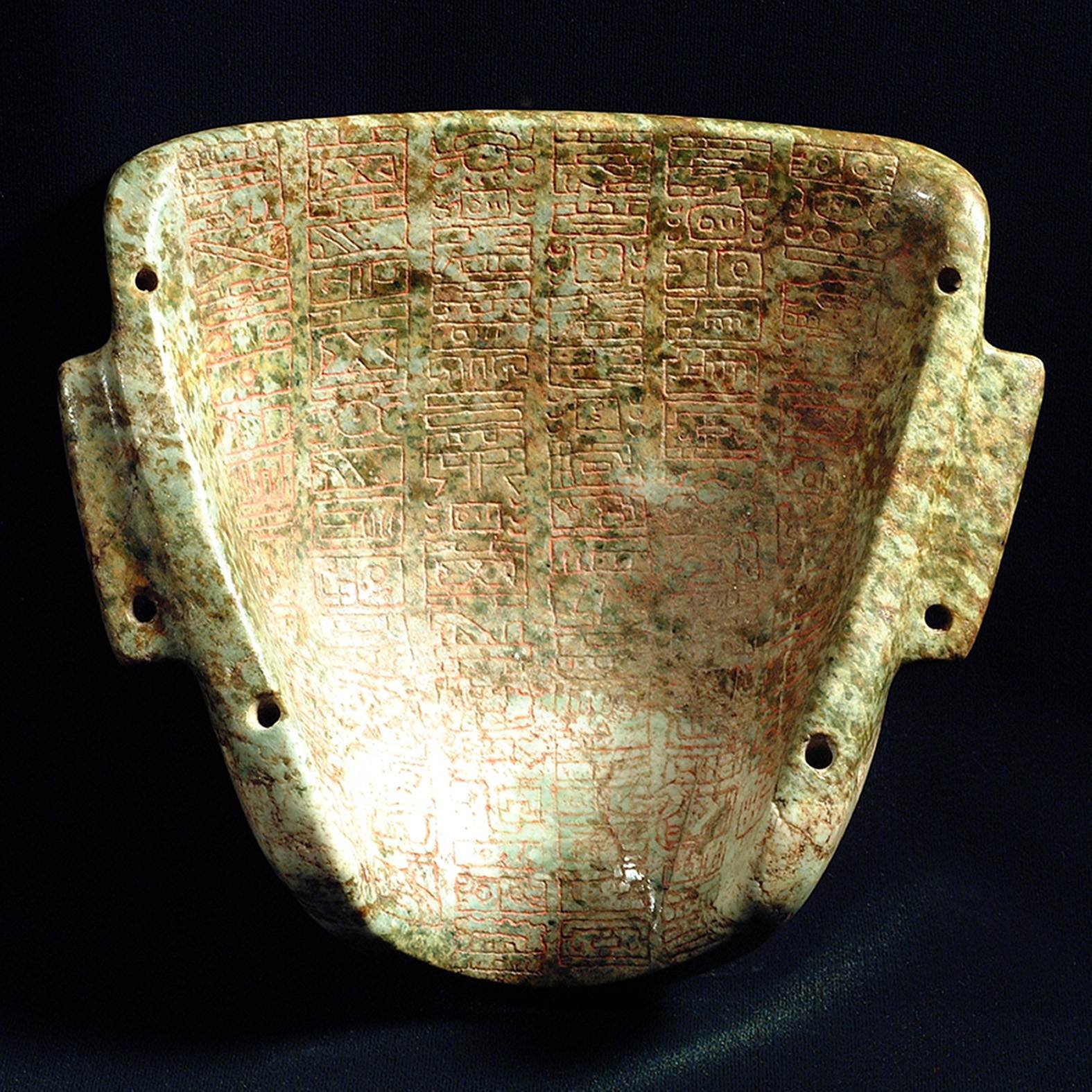Epi-Olmec: Undeciphered Isthmian Script Of Mesoamerica
A. Sutherland - AncientPages.com - There are still many un-deciphered ancient scripts scientists try to learn more about. Among them is the mysterious Isthmian script, also been referred to as "epi-Olmec", based on the belief that it encodes a language descended from that of the Olmec civilization.
Some attempts to decode the script have been made and a decipherment has been proposed, but it has not been accepted by scholars. For the time being the Isthmian script remains an unsolved ancient mystery.
The Isthmian script derives its name from the Isthmus of Tehuantepec, the general area from which the known texts originate. The Isthmus of Tehuantepec is an isthmus in Mexico. It represents the shortest distance between the Gulf of Mexico and the Pacific Ocean. Prior to the opening of the Panama Canal, it was a major shipping route known simply as the Tehuantepec Route.
Unfortunately, there are very few surviving examples of the Isthmian script. The best-known Isthmian inscription is carved on a stela recovered from the site of La Mojarra, a site on the Gulf Coast about half-way between the earlier Olmec sites of Tres Zapotes and Cerro de las Mesas. The stela referred to as Stela 1 from La Mojarra was discovered in 1986. It is a Late Preclassic monument with the longest and most complete text of any known Isthmian script.

A Teotihuacan-style mask unearthed from an unknown location in southern Mexico adds some 101 glyphs to the total number currently known for the ancient Isthmian script. Image credit: Michael Coe
Isthmian script is structurally similar to the Maya script, and Maya uses one set of characters to represent logograms (or word units) and a second set to represent syllables. This suggests these two writing systems developed together. Both systems have the Long Count calendrical system fixed with a zero date. This type of Meso-American writing was often used to record specific events and carved on stone stelae that serve as durable memorials to rules and symbols of political and religious legitimacy.
See also:
The Olmecs – Who They Were, Where They Came From Still Remains A Mystery
Unsolved Enigma Of The Inga Stone And Its Mysterious Ancient Undeciphered Signs
Robert J. Sharer, Loa P. Traxler, author of the book, The Ancient Maya writes that “La Mojarra Stela 1 is a prime example of this use of both carved image and text, including several Long Count dates. It is also clear that the origins of both writing systems must be earlier than the fully developed Late Precalssic inscriptions.
Detail showing three columns of glyphs from La Mojarra Stela 1. The two right columns are Isthmian glyphs. The left column gives a Mesoamerican Long Count calendar date of 8.5.16.9.9, or 156 CE. Image credit: Wikipedia
It is possible that wood was used for the first carved monuments and earlier written records were kept on perishable materials such as bark paper, like those used in later times for Maya codices. Evidence for this lies in the Mayan word for “to write” which is based on the root for “to paint” (with a fine brush).”
The Isthmian script has also been discovered on the Tuxtla Statuette, a small 6.3 inch (16 cm) rounded greenstone figurine, carved to resemble a squat, bullet-shaped human with a duck-like bill and wings. Most researchers believe the statuette represents a shaman wearing a bird mask and bird cloak.

Tuxtla Statuette. Image credit: Wikipedia
Tres Zapotes Stela C, discovered in 1939 by archaeologist Matthew Stirling is also engraved with the mysterious Isthmian script.
A Teotihuacan-style mask unearthed from an unknown location in southern Mexico adds some 101 glyphs to the total number currently known for the ancient Isthmian script. Of these, twenty-five is unique additions to the Isthmian corpus, according to Brigham Young University archeologist Stephen Houston and Yale University professor emeritus Michael Coe.
Written by – A. Sutherland - AncientPages.com Senior Staff Writer
Copyright © AncientPages.com All rights reserved. This material may not be published, broadcast, rewritten or redistributed in whole or part without the express written permission of AncientPages.com
Expand for referencesMore From Ancient Pages
-
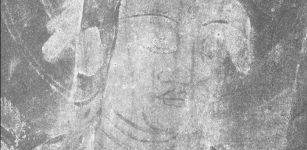 1,300-Year-Old Paintings Depicting Eight Buddhist Saints Revealed By Infrared Cameras
News | Oct 1, 2020
1,300-Year-Old Paintings Depicting Eight Buddhist Saints Revealed By Infrared Cameras
News | Oct 1, 2020 -
 Skull Of Mysterious, Extinct Cousin Of Neanderthals Recreated From A Fossilized Finger
Archaeology | Sep 19, 2019
Skull Of Mysterious, Extinct Cousin Of Neanderthals Recreated From A Fossilized Finger
Archaeology | Sep 19, 2019 -
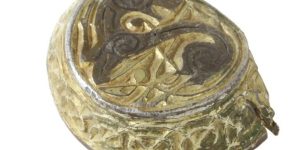 Strange 1,200-Year-Old Anglo-Saxon Artifact Used For Unknown Purpose Found In Norfolk, UK
Archaeology | Jan 18, 2024
Strange 1,200-Year-Old Anglo-Saxon Artifact Used For Unknown Purpose Found In Norfolk, UK
Archaeology | Jan 18, 2024 -
 Rare Ancient Caribbean Skull Shows Evidence Of Leprosy
Archaeology | Nov 29, 2021
Rare Ancient Caribbean Skull Shows Evidence Of Leprosy
Archaeology | Nov 29, 2021 -
 Archaeologists Discover Ancient Mayan Board Game – Here’s What It Can Teach Modern Educators
Featured Stories | May 19, 2023
Archaeologists Discover Ancient Mayan Board Game – Here’s What It Can Teach Modern Educators
Featured Stories | May 19, 2023 -
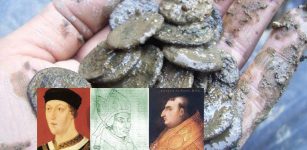 15th Century Cooking Pot With 500 Silver And Gold Coins Unearthed In Vianen, Netherlands
Archaeology | Mar 6, 2018
15th Century Cooking Pot With 500 Silver And Gold Coins Unearthed In Vianen, Netherlands
Archaeology | Mar 6, 2018 -
 Unusual Underwater Archaeological Discovery In California May Confirm Thousand-Year-Old Legend And Re-Write Ancient History
Featured Stories | Aug 15, 2024
Unusual Underwater Archaeological Discovery In California May Confirm Thousand-Year-Old Legend And Re-Write Ancient History
Featured Stories | Aug 15, 2024 -
 Treasure Of 1,753 Roman Silver Coins Accidentally Discovered In Poland
Archaeology | Apr 1, 2020
Treasure Of 1,753 Roman Silver Coins Accidentally Discovered In Poland
Archaeology | Apr 1, 2020 -
 Peculiar Unsolved Greek Mystery In New York
Featured Stories | Mar 26, 2024
Peculiar Unsolved Greek Mystery In New York
Featured Stories | Mar 26, 2024 -
 On This Day In History: Leon Trotsky Was Assassinated – On August 20, 1940
News | Aug 20, 2016
On This Day In History: Leon Trotsky Was Assassinated – On August 20, 1940
News | Aug 20, 2016 -
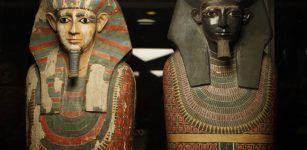 Egyptian Tomb Of The Two Brothers – DNA Solves Ancient Egyptian Mystery
Archaeology | Jan 17, 2018
Egyptian Tomb Of The Two Brothers – DNA Solves Ancient Egyptian Mystery
Archaeology | Jan 17, 2018 -
 Elusive Planet Mercury As Seen Through The Eyes Of Ancient Astronomers
Archaeoastronomy | Dec 31, 2018
Elusive Planet Mercury As Seen Through The Eyes Of Ancient Astronomers
Archaeoastronomy | Dec 31, 2018 -
 Unsolved Ancient Mystery Of Hand Of Prêles – Unique Discovery Of Ancient Bronze Hand Puzzles Scientists
Archaeology | Sep 28, 2018
Unsolved Ancient Mystery Of Hand Of Prêles – Unique Discovery Of Ancient Bronze Hand Puzzles Scientists
Archaeology | Sep 28, 2018 -
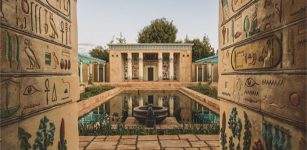 World’s First Recreated Ancient Egyptian Garden Is Now Open To The Public
News | May 17, 2022
World’s First Recreated Ancient Egyptian Garden Is Now Open To The Public
News | May 17, 2022 -
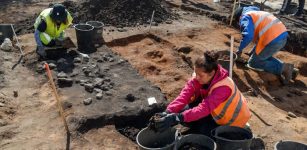 Unique Viking Age Hearths Discovered In Tallinn, Estonia
Archaeology | May 11, 2022
Unique Viking Age Hearths Discovered In Tallinn, Estonia
Archaeology | May 11, 2022 -
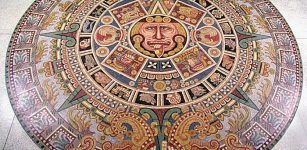 Aztecs’ Five Suns Creation Myth And Prophecy
Aztec Mythology | Jul 18, 2018
Aztecs’ Five Suns Creation Myth And Prophecy
Aztec Mythology | Jul 18, 2018 -
 Pre-Columbian Societies Declined 2,000 Years Ago Due To Sea Level Fall
Archaeology | Dec 22, 2021
Pre-Columbian Societies Declined 2,000 Years Ago Due To Sea Level Fall
Archaeology | Dec 22, 2021 -
 1,200-Year-Old Viking Sword Found By Hiker In Norway
Archaeology | Oct 22, 2015
1,200-Year-Old Viking Sword Found By Hiker In Norway
Archaeology | Oct 22, 2015 -
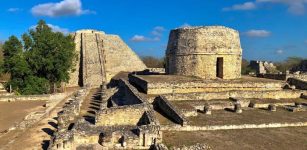 Climate, Conflict, Collapse: How Drought Destabilized The Last Major Precolonial Mayan City
Featured Stories | Jul 25, 2022
Climate, Conflict, Collapse: How Drought Destabilized The Last Major Precolonial Mayan City
Featured Stories | Jul 25, 2022 -
 Amanitore – Nubian Warrior Queen And Her Pyramids
Historical Figures | Aug 13, 2018
Amanitore – Nubian Warrior Queen And Her Pyramids
Historical Figures | Aug 13, 2018

